Fountain Glacier sedimentThese images illustrate the character of sediment carried at the glacier surface, including isolated angular rocks, a few metres in diameter, medial moraines, and debris derived from the bed. |
 Typically angular and boulder supraglacial debris on a steep section of the glacier. | 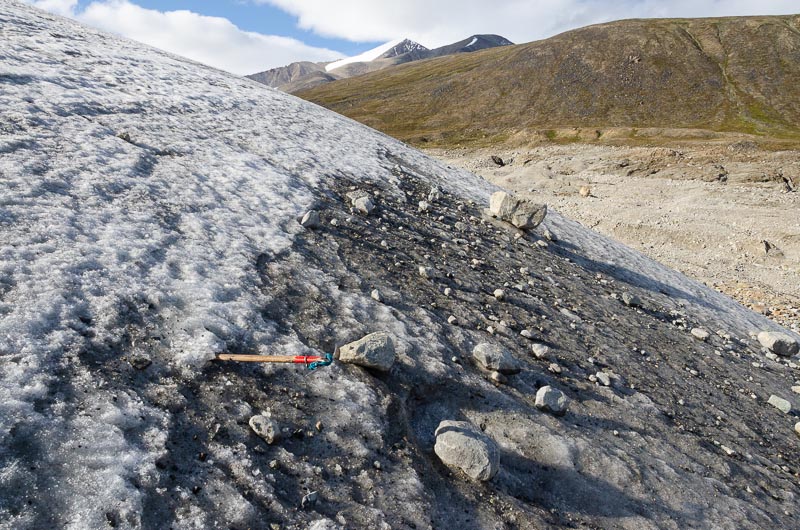 Typical basal glacial sediment, grading from silt to boulder, emerging from a thrust plane (a reactivated crevasse trace) at the surface of the glacier. | 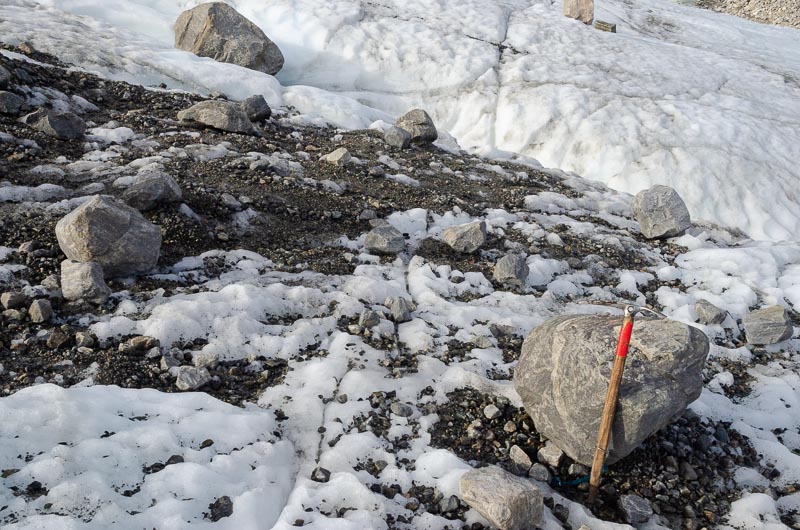 Selective sorting of basally derived supraglacial debris, associated with an intermittent moraine, northern flow unit. | 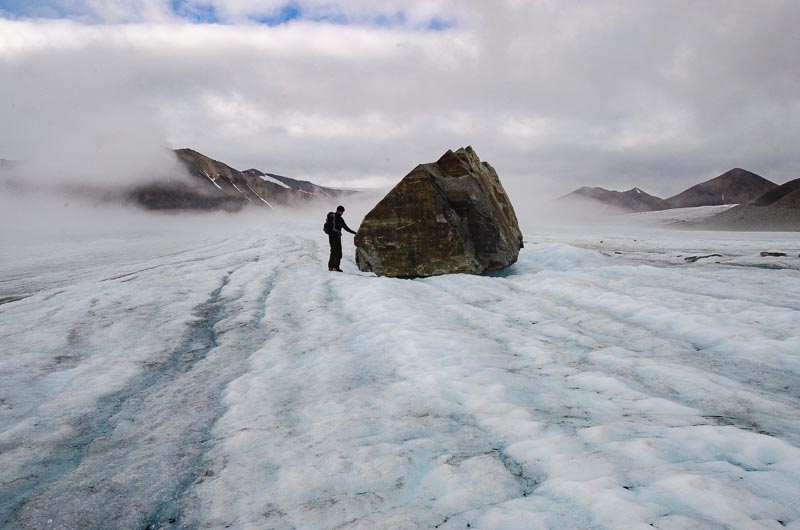 A solitary large angular boulder of gneiss in the middle of the glacier. |
 A striking gneiss boulder on the surface of the glacier reveals cubic crystals of garnet. |  A patch of water-worn boulders that have been uplifted to the surface from the bed of the glacier along a thrust plane. | 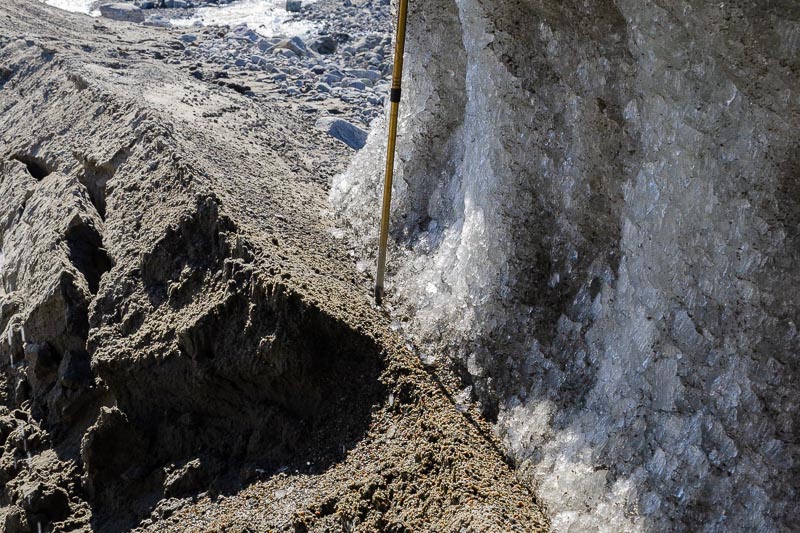 Thrust contact in detail, with fine-grained sediment of fluvial origin upended during the thrusting process. |  An angular supraglacial boulder has protected the underling ice from melting, forming a glacier table. |
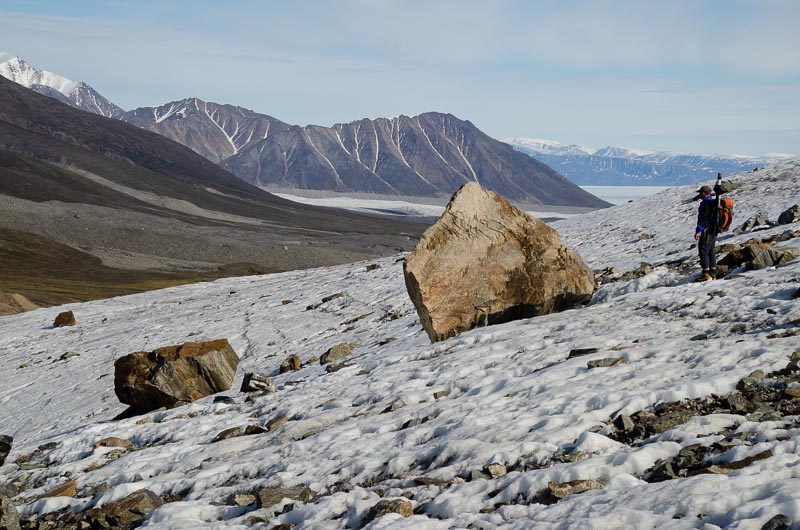 Supraglacial debris: two large angular blocks of gneiss lie on the glacier surface near the left-hand margin. | 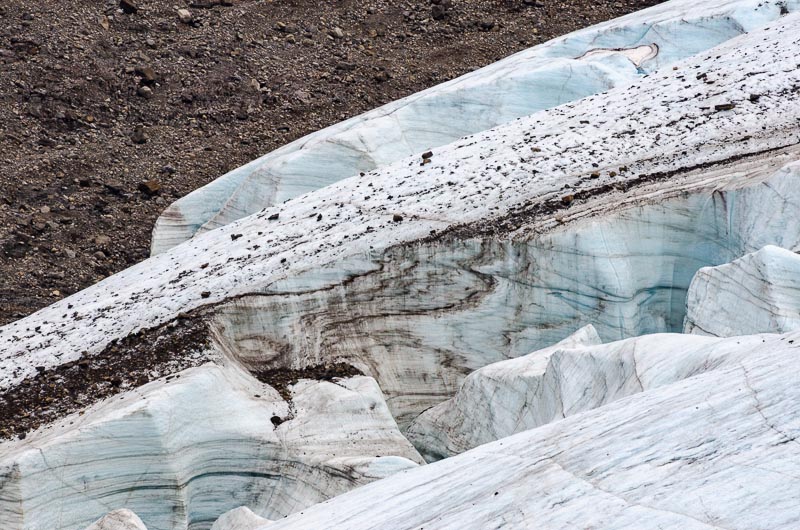 A medial moraine is not simply melted out from a single layer of debris, but may be associated with folding and foliation development. |  Distant telephoto view of a medial moraine at the right-hand flow unit. The line of debris is derived from rockfall, while the irregular spreads are debris reworked to the surface from the glacier bed. | 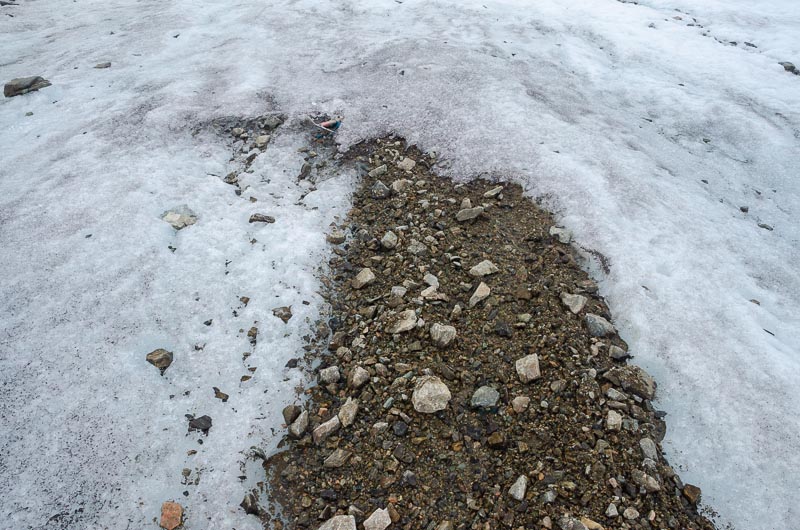 Close-up of debris in one medial moraine whose origin is from the base of the glacier, hence the rounded character of some of the larger stones. |
| Photos Michael Hambrey, July 2014 |